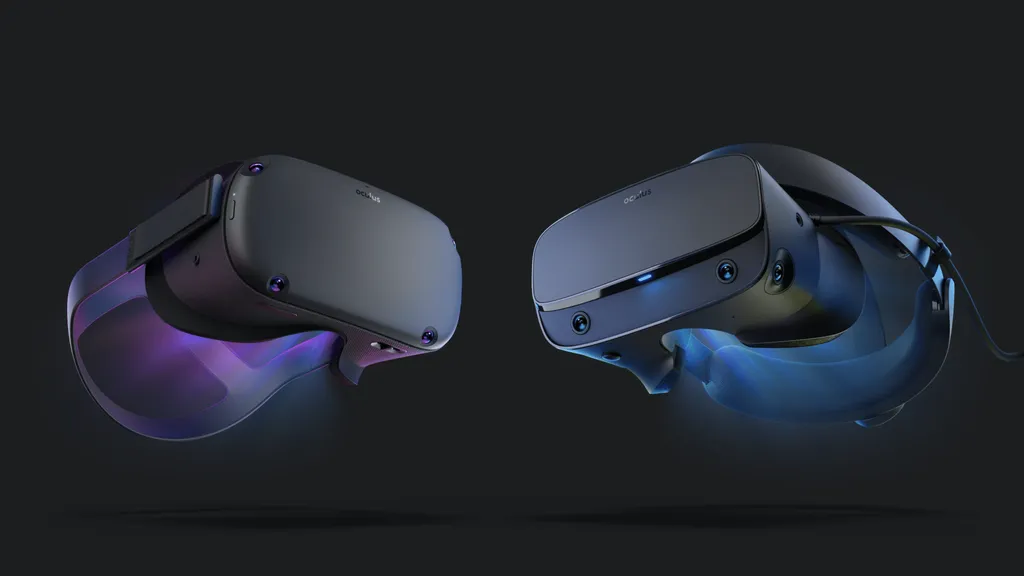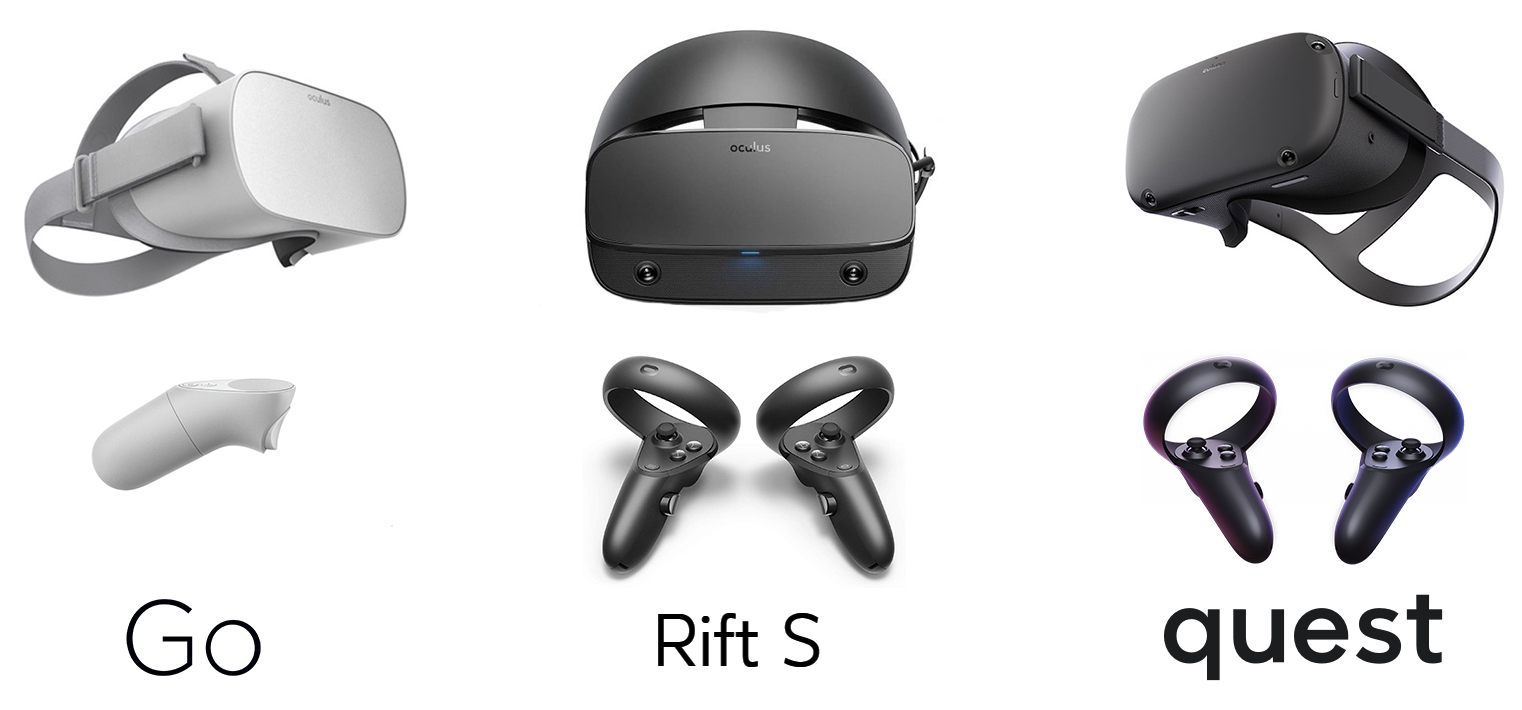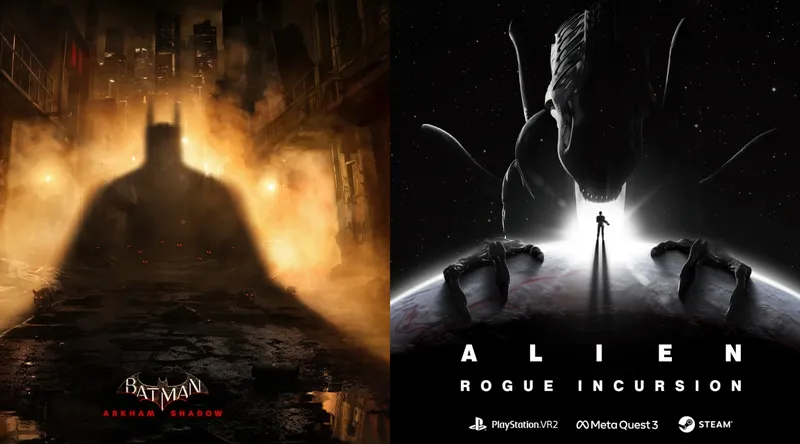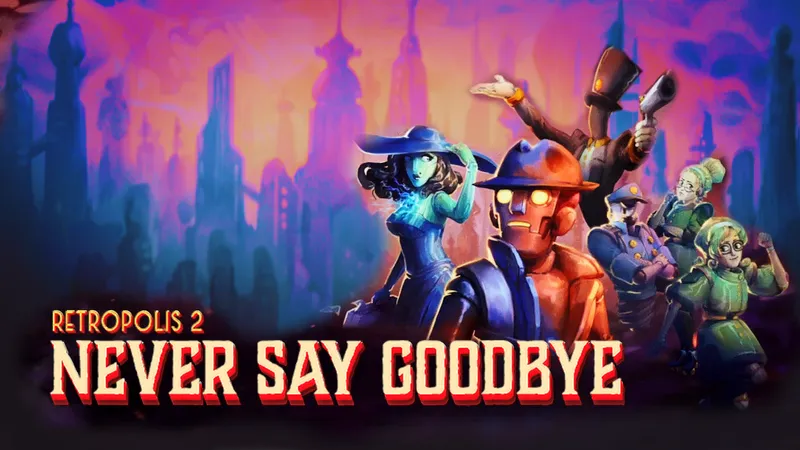It would be fair to say we were all expecting a little magic. Rumors surrounding Facebook’s Oculus Rift S had been swirling for weeks; a refreshed headset with an improved display and inside-out tracking. And, to some extent, that’s what we got. But this week’s Rift S reveal was lacking the spark that made Facebook’s most recent headset unveilings so exciting.
Rift S was announced with none of the regenerative enthusiasm or on-stage pizzazz that Facebook afforded Quest just six months ago. There was no Mark Zuckerberg and a crowd of hundreds to cheer it on. There wasn’t any of the technical wizardry of Quest nor a generously low price like that of Go. Instead, Rift S comes with, to use a term Facebook executives repeated ad nauseam in the past week, a set of ‘trade-offs’.
Compromises Where There Weren’t Before
The 90Hz dual-panel display, something Oculus once touted as a strict requirement for true immersion, has been traded in favor of an 80Hz single LCD panel. Design adds a comfort-improving halo ring, but ultimately makes the kit look a look more clunky than the first Rift’s slick form factor. It’s heavier, too, though apparently better balanced. The lack of mechanical IPD adjust, meanwhile, means that less people will be able to use Rift S comfortably. That’s a decision that’s drawn criticism from even Palmer Luckey himself.
Most damningly, instead of lowering the price to $299 as we thought it might, Facebook kicked it back up to $399. That’s a more than fair price tag when you consider the large software library awaiting you, but it doesn’t generate the eclectic buzz Go’s $199 or even Quest’s all-in $399 costs do. All of that and Facebook’s allowed the Lenovo logo to be painted onto the side of the thing.
Rift S is by no means a bad headset. Quite the opposite, in fact. But, for a device that should be making PC VR much more viable, it all feels remarkably, well, normal.
Facebook’s Split Revealed?
I think it’s right to wonder why Rift S isn’t just a cheaper Quest with its processing innards gutted. Moreover, why isn’t Quest fitted with a port to connect it to a PC and run PC VR itself? Questions like these bring to mind the confused reports of Facebook’s PC VR strategy that surfaced late last year. TechCrunch claimed former Oculus CEO Brendan Iribe had parted ways with the company after his vision of ‘Rift 2’ got scrapped in favor of this mid-generation refresh. Six months on, Oculus VP of Product Nate Mitchell tells us it partnered with Lenovo to bring Rift S to market with “speed”. It connects the dots just a little.
Now, to be clear, I still plan on getting a Rift S. I rent a small London flat in which I have one clear objective: eliminate clutter. Getting rid of external sensors is a huge bonus for me. But, like UploadVR’s David Jagneaux said in his article earlier this week, all Rift S’s reveal really did was make me that much more excited for Quest. I can’t help but think that’s somewhat intentional on Facebook’s part.
The Quest To Dominate VR
Mitchell connected more dots for us on that front. He told us that Oculus is now asking its Studios developers to make content for both Rift S and Quest, calling into question if we’ll see more Rift exclusives once the likes of Asgard’s Wrath and Respawn’s game are out the door. This week ILMxLAB also reiterated that Star Wars: Vader Immortal, perhaps the most anticipated VR experience on the horizon, will debut on Quest and Quest alone before coming to other headsets.
There’s an undeniable air of Quest overtaking Rift as VR’s front-runner around Facebook’s messaging. Beat Saber was treated to its very own Oculus embargo and reveal video for the Quest reveal. Oculus says its bringing big games like The Climb and Robo Recall over to the headset. Everything seems to be coming up Quest.
And, to be fair, can you blame them? There’s buzz around this thing like no other headset before it. It solves a lot of the problems leveled at 2016-era headsets even if it creates some of its own. We’ve been taught potent lessons in power not equating to popularity in the past; just look at Nintendo and the Wii. Quest almost certainly isn’t destined to sell hundreds of millions of units, but it seems far better-poised to prove VR can succeed than anything else.
Facebook’s PC VR Future
But the question that remains is a valid one; is Oculus still a home for VR enthusiasts? Those that won’t accept a single compromise in the quest (sorry) for the most immersive experience? The past few months have suggested that answer might be starting to shift. Valve’s long-rumoured SteamVR headset and HTC’s modular Vive Cosmos seem like they might be better suited for that crowd. Then again, the mere existence of Oculus’ Half-Dome Rift prototype suggests that Facebook isn’t done in that arena, either. It seems like the eventual Rift S successor, and just how much meat is on that bone, will really show how committed Facebook remains to PC VR.
As we repeated earlier this week, Oculus Quest feels like a turning point for VR. It’s just a shame that the next version of the Oculus Rift doesn’t carry that same weight.































